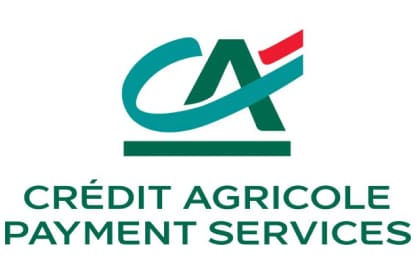Why OpenText
Why OpenText
Overview Why OpenText
OpenText brings decades of expertise to help you unlock data, connect people and processes, and fuel AI with trust
Manage and connect data
Unify data seamlessly across your enterprise to eliminate silos, improve collaboration, and reduce risks
AI-ready information
Get AI-ready and transform your data into structured, accessible, optimized information
Built-in security and compliance
Meet regulatory and compliance requirements and protect your information throughout its lifecycle
Empowering people
Overview Empowering people
OpenText helps people manage content, automate work, use AI, and collaborate to boost productivity
Customers
See how thousands of companies around the world are succeeding with innovative solutions from OpenText
Employees
Our people are our greatest asset; they are the life of the OpenText brand and values
Corporate Responsibility
Learn how we aspire to advance societal goals and accelerate positive change
Partners
Find a highly skilled OpenText partner with the right solution to enable digital transformation
How we compare
Content Management
Service Management
Deploy anywhere
Overview Deployment options
Explore scalable and flexible deployment options for global organizations of any size
Sovereign cloud
Local control. Global scale. Trusted AI
Private cloud
Your cloud, your control
On-premises
Free up resources, optimize performance and rapidly address issues
Public cloud
Run anywhere and scale globally in the public cloud of your choice
AI leadership
Overview Aviator AI
See information in new ways
OpenText™ Aviator AI
AI that understands your business, your data, and your goals
OpenText™ MyAviator
Say hello to faster decisions. Your secure personal AI assistant is ready to get to work
OpenText™ Business Network Aviator
Gain better insights with generative AI for supply chains
OpenText™ Content Aviator
Power work with AI content management and an intelligent AI content assistant
OpenText™ Cybersecurity Aviator
Improve your security posture with AI cybersecurity and agile threat detection
OpenText™ DevOps Aviator
Enable faster app delivery, development, and automated software testing
OpenText™ Experience Aviator
Elevate customer communications and experiences for customer success
OpenText™ Service Management Aviator
Empower users, service agents, and IT staff to find the answers they need
Aviator AI
Overview Aviator AI
See information in new ways
OpenText™ Aviator AI
AI that understands your business, your data, and your goals
OpenText™ MyAviator
Say hello to faster decisions. Your secure personal AI assistant is ready to get to work
OpenText™ Business Network Aviator
Gain better insights with generative AI for supply chains
OpenText™ Content Aviator
Power work with AI content management and an intelligent AI content assistant
OpenText™ Cybersecurity Aviator
Improve your security posture with AI cybersecurity and agile threat detection
OpenText™ DevOps Aviator
Enable faster app delivery, development, and automated software testing
OpenText™ Experience Aviator
Elevate customer communications and experiences for customer success
OpenText™ Service Management Aviator
Empower users, service agents, and IT staff to find the answers they need
Analytics
Overview Analytics
Predict, act, and win with real-time analytics on a smarter data platform
OpenText™ Aviator Search(AI)
Give users access to the answers they need, faster and easier, with multi-repository AI-based search that lets you contextualize everything from clicks to conversations
Business Network
Overview Business Network
Connect once, reach anything with a secure B2B integration platform
Content
Overview Content
Reimagine knowledge with AI-ready content management solutions
OpenText™ Content Aviator(AI)
Supercharge intelligent workspaces with AI to modernize work
Cybersecurity
Overview Cybersecurity
Integrated cybersecurity solutions for enterprise protection
OpenText Cybersecurity for SMBs & MSPs
Purpose built data protection and security solutions
OpenText™ Cybersecurity Aviator(AI)
Reinvent threat hunting to improve security posture with the power of agile AI
DevOps
Overview DevOps
Ship better software—faster—with AI-driven DevOps automation, testing, and quality
Experience
Overview Experience
Reimagine conversations with unforgettable customer experiences
Observability and Service Management
Overview Observability and Service Management
Get the clarity needed to cut the cost and complexity of IT operations
OpenText™ Service Management Aviator(AI)
Redefine Tier 1 business support functions with self-service capabilities from private generative AI
APIs
Overview APIs
Build custom applications using proven OpenText Information Management technology
OpenText™ API Services
Build it your way with OpenText Cloud APIs that create the real-time information flows that enable custom applications and workflows
Device and Data Protection
Overview Device and Data Protection
Protect what matters, recover when it counts
Unified Endpoint Management Tools
- OpenText™ Endpoint Management
- OpenText™ ZENworks Suite
- OpenText™ ZENworks Service Desk
- OpenText™ ZENworks Configuration Management
- OpenText™ ZENworks Endpoint Security Management
- OpenText™ ZENworks Full Disk Encryption
- OpenText™ ZENworks Endpoint Software Patch Management
- OpenText™ ZENworks Asset Management
Solutions
Trusted Data & AI
Overview Trusted Data & AI
Secure information management meets trusted AI
OpenText AI Data Platform
A unified data framework to elevate data and AI trust
OpenText Aviator Studio
A place where you can build, deploy, and iterate on agents in your data's language
OpenText Discovery
A set of tools to help ingest data and automate metadata tagging to fuel AI
OpenText Data Compliance
A suite of services and APIs that make governance proactive and persistent
OpenText Aviator AI Services
Professional services experts who help you on your AI journey
Information Reimagined
Overview Information Reimagined
Get greater visibility and sharper insights from AI-driven information management. Ready to see how?
Knowledge reimagined
Transform daily work with enterprise content management powered by AI
Service Management reimagined
Cut the cost and complexity of IT service management, AIOps, and observability
Connections reimagined
AI-powered B2B integration for supply chain success
Conversations reimagined
Drive value, growth, and loyalty with connected customer experiences
Engineering reimagined
Agile development and software delivery? It only seems impossible
Security reimagined
Cybersecurity for the Enterprise
Decisions reimagined
Unlock insights with AI data analytics
Artificial Intelligence
Overview Aviator AI
See information in new ways
OpenText™ Aviator AI
AI that understands your business, your data, and your goals
OpenText™ MyAviator
Say hello to faster decisions. Your secure personal AI assistant is ready to get to work
OpenText™ Business Network Aviator
Gain better insights with generative AI for supply chains
OpenText™ Content Aviator
Power work with AI content management and an intelligent AI content assistant
OpenText™ Cybersecurity Aviator
Improve your security posture with AI cybersecurity and agile threat detection
OpenText™ DevOps Aviator
Enable faster app delivery, development, and automated software testing
OpenText™ Experience Aviator
Elevate customer communications and experiences for customer success
OpenText™ Service Management Aviator
Empower users, service agents, and IT staff to find the answers they need
Industry
Overview Industry solutions
Improve efficiency, security, and customer satisfaction with OpenText
Energy and resources
Transform energy and resources operations with cloud, cybersecurity, and AI
Financial services
Boost customer experience, compliance, and efficiency with AI
Government
Reimagine your mission with government-secure information management
Healthcare and life sciences
Improve care delivery and patient engagement with AI-powered solutions
Legal
Modernize legal teams with automated, AI-powered legal tech solutions
Manufacturing
Modernize manufacturing operations and logistics to reduce costs and ensure compliance
Retail and consumer goods
Enhance consumer engagement with omnichannel retail solutions and AI
Enterprise Application
Overview Solutions for Enterprise Applications
Run processes faster and with less risk
Services
Services
Overview Services
Achieve digital transformation with guidance from certified experts
Professional Services
Modernize your information management with certified experts
Customer Success Services
Meet business goals with expert guidance, managed services, and more
Support Services
Turn support into your strategic advantage
Managed Services
Free up your internal teams with expert IT service management
Learning Services
Discover training options to help users of all skill levels effectively adopt and use OpenText products
Professional Services
Overview Professional Services
Modernize your information management with certified experts
Customer Success Services
Overview Customer Success Services
Meet business goals with expert guidance, managed services, and more
Support Services
Overview Support Services
Turn support into your strategic advantage
Managed Services
Overview Managed Services
Free up your internal teams with expert IT service management
Learning Services
Overview Learning Services
Discover training options to help users of all skill levels effectively adopt and use OpenText products
Partners
Find a Partner
Overview Find a partner
Information is the heartbeat of every organization. We build information management software so you can build the future
Cloud Partners
Overview Cloud Partners
OpenText partners with leading cloud infrastructure providers to offer the flexibility to run OpenText solutions anywhere
Enterprise Application Partners
Overview Enterprise Application Partners
OpenText partners with top enterprise app providers to unlock unstructured content for better business insights
Partner Solutions
Overview Partner Solutions
Discover flexible and innovative offerings designed to add value to OpenText solutions
Resources for Partners
Overview Resources for Partners
Discover the resources available to support and grow Partner capabilities
Support
Overview Customer Support
Get expert product and service support to accelerate issue resolution and keep business flows running efficiently
Resources
Overview Resources
Explore detailed services and consulting presentations, briefs, documentation and other resources
This page is available for the following regions.
Europe, Middle East and Africa
Asia–Pacific
About Crédit Agricole Payment Services

-
Transactions:>15 billion/year
-
Payments:>4 billion authorizations/year
-
Employees:740
-
Based in:France
Summary
Challenges
- Starting test automation late in the life cycle increased time to market.
- Automated tests struggle when changes occur.
- Testers were distracted by repetitive, low-value tasks.
Solution
- Began migrating lifecycle management solutions to the cloud.
- Optimized mobile apps for a wide range of hardware.
- Introduced AI to software testing.
Results
Simplified and optimized lifecycle management
Accelerated testing and removed roadblocks
Automated between 2,000 and 3,000 tests
Challenges
- Test automation can only start relatively late in the development cycle, which increases time to market
- Automated tests can struggle to identify application objects that have changed
- Experienced testers are spending time and effort on repetitive, low-value tasks
Crédit Agricole Payment Services handles the payment services for banks in its parent group and their clients across transfers, debits, cards, contactless, mobile payments, and its “Up2pay” mobile payment acceptance solution. To manage over 15 billion transactions annually, Crédit Agricole Payment Services built a number of internal and customer-facing applications, including payment solutions designed for use by small businesses that can be accessed from dedicated terminals or even via mobile.
To keep its applications performing reliably and securely, and to enable the rapid roll-out of valuable new functionalities, Crédit Agricole Payment Services has curated a highly skilled internal software lifecycle management and testing capability. For years, the company has used OpenText Application Quality Management to manage software quality and as a repository for its test scripts. For the automation of functional tests, the company has long relied on OpenText Functional Testing, integrated with OpenText Functional Testing Lab for Mobile and Web to ensure that its software works as expected on the most-used mobile handsets.
Against the backdrop of a broader digital transformation and standardization initiative at the Crédit Agricole group level, which includes the development of an internal software factory, Crédit Agricole Payment Services wanted to enhance and future-proof its testing capabilities. With costs rising and access to skilled resources becoming more challenging, the company wanted to move testing to the cloud where possible and to increase the level of automation. It also aimed to adopt shift-left practices, moving testing to an earlier stage in the software lifecycle and providing stronger connections between testers and developers.
By planning the future migration of its existing tools to their software-as-a-service (SaaS) versions, Crédit Agricole Payment Services also wanted to be in a position to take full advantage of new AI capabilities to enhance software testing workflows. While the existing tools still worked well, the company identified the opportunity to start test automation earlier and thereby reduce time to market. A key barrier was that conventional test automation can struggle to identify changed objects in applications—so automation can usually only happen relatively late in the cycle, when objects are already largely fixed in appearance. The need to delay test automation meant more low-value manual work for testers, hindering their ability to deliver value. By tapping into enhanced AI that offers more flexible recognition of application objects, Crédit Agricole Payment Services expected that it could start building automation much earlier in the cycle, even before development formally began, which would both accelerate the whole process and free up skilled employees to focus on higher-value tasks.

We’re using AI as a tool to start earlier and go faster, and to increase the frequency of testing, but not to replace skilled testers.
Solution
To modernize software management, Crédit Agricole Payment Services will migrate to OpenText Core Software Delivery Platform—a SaaS solution running on the OpenText Cloud—and update its OpenText Functional Testing solution to leverage new AI features.
Products deployed
-
OpenText™ Core Software Delivery Platform
Maximize value, reduce risk, and speed delivery with end-to-end DevOps
-
OpenText™ Application Quality Management
Improve visibility into the application lifecycle and simplify reporting
-
OpenText™ Functional Testing
Accelerate test automation with the power of AI
-
OpenText™ Functional Testing Lab for Mobile and Web
Develop, debug, monitor, and optimize applications from anywhere
Beginning the cloud migration
Crédit Agricole Payment Services has begun moving its software lifecycle management environment to the cloud in stages. This project started with the migration of 70 active projects in its on-premises OpenText Application Quality Management landscape to the SaaS version of the solution on the OpenText Cloud.
Next, the company will deploy OpenText Core Software Delivery Platform—a SaaS-native solution—for all new software projects. Then, it will migrate selected projects—those that have a long-term future and those that will benefit from the adoption of agile principles—from OpenText Core Application Quality Management to OpenText Core Software Delivery Platform.
Optimizing mobile apps
As part of its modernization initiative, Crédit Agricole Payment Services has updated its OpenText Functional Testing and OpenText Functional Testing Lab for Mobile and Web environments to take advantage of new capabilities, including AI. The company hosts physical mobile devices (smartphones and payment terminals) in its own data center, connected to OpenText Functional Testing Lab for Mobile and Web in the cloud and to its on-premises OpenText Functional Testing environment. OpenText Functional Testing Lab for Mobile and Web enables remote control of the physical devices, empowering Crédit Agricole Payment Services to use OpenText Functional Testing to perform automated testing of interactions on the real target hardware rather than on emulators. OpenText Core Application Quality Management and OpenText Core Software Delivery Platform store and manage the test scripts and results.
The company uses its OpenText Functional Testing and OpenText Functional Testing Lab for Mobile to test a payment application used by small businesses in France to accept card and contactless payments. Most of the smartphones and terminals used by these small businesses are based on the Android operating system; the company’s goal is to ensure that the application is secure and usable on the widest possible variety of devices. Crédit Agricole Payment Services also uses OpenText Functional Testing Lab for Mobile and Web to test the integration of its payment API into a variety of payment solutions embedded in terminals used by larger businesses.
François Moreau, test engineer at Crédit Agricole Payment Services, said, “OpenText Functional Testing Lab for Mobile and Web enables us to maintain a representative estate of smartphones and terminals as targets for testing. Even though the devices are typically based on Android, there can be significant divergence in the manufacturer’s overlays. OpenText Functional Testing Lab for Mobile and Web enables us to understand how disparities in these overlays may impact the behavior of our applications.”
Entering the world of AI
OpenText is leading the way in bringing the power of AI solutions into the domains of DevOps and software testing. For Crédit Agricole Payment Services, the adoption of SaaS solutions from OpenText could provide an opportunity to easily benefit from a packaged AI solution from a trusted, long-term vendor. “We will take advantage of our move to SaaS to look at what advantages AI could bring us,” said François Moreau. “Generalist AI companies don’t seem to have the answers when it comes to software testing, whereas this is the core business for OpenText. We are currently reviewing whether their AI could be better adapted to our specific needs.”
A key objective for Crédit Agricole Payment Services is to bring automated testing closer to the start of the software lifecycle. Traditionally, test automation starts when non-regression testing begins—because that is when application functionality is relatively stable. At that point, classic non-AI functionality in a test automation solution can reliably recognize technical objects and manage their properties.
In the agile world, stability might occur after a dozen or so sprints, which represents a large amount of lost time. Instead of relying on the technical recognition of objects, AI can use visual recognition and text recognition, which makes it far less sensitive to change. This means that Crédit Agricole Payment Services can potentially start designing automated tests from application wireframes even before development has started.
Working from a wireframe—for example, a set of mocked-up screens showing the interactions required to place a product in the online cart and pay for it—the AI in OpenText Functional Testing can build the required test script. When development work on the application is in process, the AI can find the corresponding elements—even though they look different from the wireframe—and interact with them to perform automated testing.

By bringing the business, developers and testers together earlier in the cycle, we’ll save time but also improve application quality.
Results
By migrating to SaaS solutions for application lifecycle management, Crédit Agricole Payment Services hopes to reduce cost and complexity, while new AI capabilities help accelerate testing and time to market for new and updated applications.
Simplifying and optimizing lifecycle management
Replacing OpenText Core Application Quality Management with OpenText Core Software Delivery Platform will give Crédit Agricole Payment Services more flexibility and openness in managing its software portfolio. OpenText Core Software Delivery Platform offers easy integration not only with OpenText Functional Testing but with all major CI/CD tools such as Jenkins, making it easy for the company to execute automated testing and collate all the results centrally.
With OpenText Core Software Delivery Platform, whatever test automation tool Crédit Agricole Payment Services uses for a given project will be able to pull in the results and manage the testing activity from a single point of control. And as Crédit Agricole Payment Services moves its lifecycle management tools to the cloud, it is optimizing its IT infrastructure and maintenance. The company will no longer need to maintain and host on-premises systems, saving significant amounts of time and money.
Extending the power and reach of testing
Using OpenText Functional Testing and OpenText Functional Testing Lab for Mobile and Web, Crédit Agricole Payment Services has automated between 2,000 and 3,000 tests and extended to a more diverse set of hardware: 30 to 40 different terminals and handsets.
AI features in OpenText Functional Testing are already helping the company by improving the ability of automated tests to negotiate potential obstacles, such as authentication in mobile apps. AI is helping its automated tests to interact with apps and devices in a more human way, which increases the success rate of working through standard security controls.
Accelerating testing and removing roadblocks
Using the AI features in OpenText Functional Testing, Crédit Agricole Payment Services has seen that a single image can be enough to create test scenarios, unlike conventional automation where you need to have recognizable code. Therefore, with AI, the company can anticipate what the customer journeys will be and start building the testing structure even before development work has begun. And as objects change during the development phase, the AI is flexible enough to adapt.
AI object recognition also potentially simplifies testing across different targets. The company will be able to run the same automated test against Android, iOS, and web browsers, rather than needing to rewrite the test for each different technology.
“We’re using AI as a tool to start earlier and go faster, and to increase the frequency of testing, but not to replace skilled testers,” said François Moreau. “Rather, the AI handles simple and repetitive tasks, releasing skilled testers to work more closely with developers and application owners. By bringing the business, developers and testers together earlier in the cycle, we’ll save time but also improve application quality.”






 Credit Agricole Payment Services
Credit Agricole Payment Services